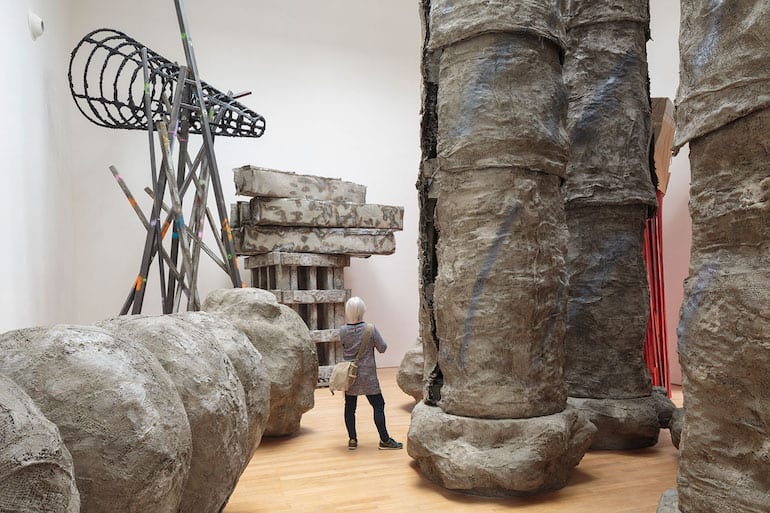Why I am going to the Venice Biennale this year
Some art requires conceptual consideration; some is pleasing to the senses, and then there is work that grabs you by the throat and won’t let go, no matter where you’re from, how old you are, or how you voted.
On May 13th, Viva Arte Viva, the 57th Venice Biennale, opened its doors, and it is all of these. The first of its kind and the standard-bearer for this kind of international show, the art fair continues to thrive despite controversies over Islam, AIDS, and the representation of artists from developing countries. This year, migration is one of the dominant themes.
I plan to wait until the tourists and heat dissipate, and get myself to a city built on water that has been taken over by art – to see for myself whether the show lives up to its promise.
My first stop will be Anne Imhof’s Faust in the German pavilion. Dobermans guard the entrance. Visitors walk on a glass floor where black-clad figures writhe and chant, crawling among dog bowls. Some of them escape, rising from below and skulking in the crowd. I might not stay for the entire two hour performance, but I am curious to see if I agree with the critics and judges of the Golden Lion award.

As a compatriot, I will pass through the American pavilion, for Mark Bradford’s take on what it means to be a black, gay man in America right now. Tomorrow is Another Day references the underside of slave ships, the AIDS crisis, and Black Lives Matter. I will duck under a hanging shape that might be a foot festering with sores, and make sure I see the video at the end, which veers closer to hope and resilience than the rest of the exhibit.

Next stop, Canada, where the roof has been disassembled and water has been re-routed through Venice’s antiquated pipes to make it shoot into the sky and down again, amidst the sculptures inside.
I am less interested in Damian Hirst’s “comeback” collection, about a mythical sunken ship that has been excavated, full of Disney and other pop culture references, and more in how British artist Phyllida Barlow piles towering structures inside the UK pavilion. One looks like red pasta pouring from a box. Others are giant grey rock-like shapes that would be laughed out of Stonehenge.

In Green Light, by artist Olafur Eliasson, I will join in the art-making with migrants, asylum seekers, and other members of the public. We will assemble geodesic lamps to create a glowing green collaborative sculpture, and I might buy one to benefit non-profits that work with refugees. This exhibit does more than highlight the issue of global migration; it takes action and builds community. Similarly, American artist Bradford has funded a job-training project for inmates in Venice for the next six years.

For an emotional recharge, I will check out Finland’s two animatronic robots, who interact with each other and project videos for the audience.
I may or may not become a card-carrying member of the Slovenian art collective Neue Slowenische Kunst. For 24 euro, anyone can become a citizen of this post-global, borderless society, in an act of protest that challenges the fair’s antiquated, nation-based structure.
Till 26 November 2017
Various venues – check labiennale.org for details
Venice, Italy



